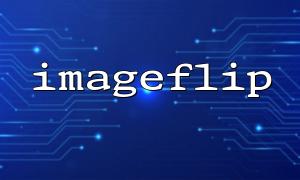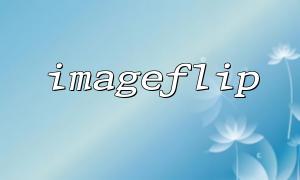In PHP, the imageflip and imagerotate functions are two functions commonly used for image processing. imageflip is used to flip an image, imagerotate allows us to rotate the image. Using these two functions can achieve some complex image operations. This article will introduce in detail how to use imageflip and imagerotate functions in combination and give practical examples.
Before you begin, make sure your PHP environment has the GD library enabled. The GD library provides a variety of image processing functions, including flip and rotate operations. You can check whether the GD library is enabled by using the phpinfo() function.
phpinfo();
If the GD library is not enabled, you can refer to the official documentation to install it.
The imageflip function is used to flip an image. The syntax is as follows:
bool imageflip ( resource $image , int $mode )
$image is the image resource that needs to be operated on, and the $mode parameter determines the type of flip. $mode can be one of the following constants:
IMG_FLIP_HORIZONTAL : Flip horizontally.
IMG_FLIP_VERTICAL : Flip vertically.
IMG_FLIP_BOTH : Flip horizontally and vertically at the same time.
The imagerotate function is used to rotate an image. The syntax is as follows:
resource imagerotate ( resource $image , float $angle , int $background_color )
$image is the image resource, $angle is the rotation angle, and $background_color is the color that fills the blank area after rotation. Typically, $background_color is a color value generated by the imagecolorallocate function.
We can flip the image first, then rotate it, or rotate it first and flip it. Here is a simple example that demonstrates how to combine these two functions to process images.
<?php
// Loading the image
$image = imagecreatefromjpeg('example.jpg');
// Flip the image(Horizontal flip)
imageflip($image, IMG_FLIP_HORIZONTAL);
// Rotate the image
$image = imagerotate($image, 45, 0);
// Save the results
imagejpeg($image, 'result.jpg');
// Free memory
imagedestroy($image);
?>
In this example, we first load a JPEG image and then flip horizontally using the imageflip function. Next, use the imagerotate function to rotate the image 45 degrees. Finally, save the processed image as result.jpg .
The order of flip and rotate will affect the final effect. The following two examples demonstrate the impact of different orders:
<?php
$image = imagecreatefromjpeg('example.jpg');
// 先Rotate the image
$image = imagerotate($image, 90, 0);
// 再Flip the image(Vertical flip)
imageflip($image, IMG_FLIP_VERTICAL);
// Save the results
imagejpeg($image, 'rotated_flipped.jpg');
imagedestroy($image);
?>
<?php
$image = imagecreatefromjpeg('example.jpg');
// 先Flip the image(Horizontal flip)
imageflip($image, IMG_FLIP_HORIZONTAL);
// 再Rotate the image(45Degree)
$image = imagerotate($image, 45, 0);
// Save the results
imagejpeg($image, 'flipped_rotated.jpg');
imagedestroy($image);
?>
With these two examples, you can see that different orders will lead to different image effects. Choose the right order according to your needs.
In practical applications, we may get the image through the URL and process it. Suppose we download the image from a URL and flip and rotate it, we can refer to the following example:
<?php
// use cURL from URL Get an image
$url = "https://gitbox.net/images/example.jpg";
$imageData = file_get_contents($url);
$image = imagecreatefromstring($imageData);
// 翻转和Rotate the image
imageflip($image, IMG_FLIP_HORIZONTAL);
$image = imagerotate($image, 90, 0);
// Save the results
imagejpeg($image, 'processed_image.jpg');
imagedestroy($image);
?>
In this example, we download the image from gitbox.net and flip and rotate.
Through the combination of imageflip and imagerotate functions, we can achieve multiple image effects. In actual projects, the order of operations can be freely selected according to the needs. Combining the function of obtaining images from URLs for processing can also greatly improve development efficiency.
If you want to further optimize or implement more complex image processing, you can refer to the official PHP documentation and related libraries.















